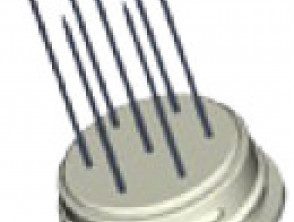What is electrochemotherapy?
Electrochemotherapy combines short, strong electrical pulses with cytotoxic chemotherapy and is used primarily to treat skin tumors. The electrical pulses make tumor cells transiently more permeable to the drug. Combination treatment works better than either modality alone.
In April 2013, electrochemotherapy received approval from the NICE (National Institute for Health and Clinical Excellence, UK) for use as a palliative treatment for metastasis on the skin of tumors of non-cutaneous origin and melanoma. The approval followed an evaluation of the evidence for effectiveness and confirmation that there were no major security issues.
Electrochemotherapy is available in Europe and is in the initial approval process in the US (July 2013).
What tumors are treated with electrochemotherapy?
Electrochemotherapy is used to treat subcutaneous and cutaneous metastases: these are secondary tumors that arise on the skin after Cancer has spread since its primary site. Surgical or radiation treatment can be used at the same time.
The most frequently treated skin tumors are:
- Metastatic melanoma
- Metastatic scaly cell carcinoma
- Metastatic or advanced inoperable basal cell carcinoma
- Metastatic breast cancer
-
Kaposi sarcoma.
There are case reports of successful use of electrochemotherapy in:
- Merkel cell carcinoma
- Eccrine porocarcinoma
- Dermatofibrosarcoma protuberans
- Basal cell nevus syndrome (Gorlin)
-
Cutaneous B cells lymphoma.
Electrochemotherapy may be considered for a skin tumor where surgery is complicated: for example, in older patients, or where there are large or numerous lesions, the patient is prone to keloid scars, or to minimize cosmetic or functional defects. Can be used on skin that has suffered radiotherapy. It is most effective in small tumors. Indications for treatment include:
- Bleeding from a tumor
- A painful tumor
- Unsightly injuries.
Electrochemotherapy should not be used if the patient is allergic to the chemotherapy drug or has a severe bleeding disorder.
Electrochemotherapy can also be used for internal tumors if they are accessible, eg. laparoscopically or endoscopy. Electrochemotherapy is generally not recommended for rapidly enlarging non-skin tumors.
Electrochemotherapy only works on tumors that have been treated with electrical pulses. It is not effective for distant metastases, which must be treated by other means.
What drugs are used with electrochemotherapy?
Bleomycin is the most commonly used chemotherapy drug for electrochemotherapy. Cisplatin can be used if bleomycin is not suitable, for example if the maximum safe dose of bleomycin has been exceeded or if there have been unacceptable side effects of bleomycin.
The drug dose is lower than for regular chemotherapy because the electrical pulses make bleomycin and cisplatin more active, allowing a very high concentration to be delivered to a tumor with very little drug entering the general circulation. Lower doses are safer and better tolerated than standard chemotherapy.
What device is used for electrochemotherapy?
Electrotherapy is delivered through an electroporation system. The treatment described here.2 uses a Cliniporator ™ (IGEA, Modena, Italy), designed for electrochemotherapy and controlled by computer. It is approved for use in European Community (CE) countries. There are three types of electrodes; selection depends on the size and depth of a tumor. The dose can be administered using 5 Hz or 5000 Hz.
Cliniporator ™ and Electrodes

Cliniporator ™

Cliniporator ™ Electrode

Cliniporator ™ Electrode

Cliniporator ™ Electrode
Images provided by IGEA SpA - Oncology Division
Describe the procedure.
How painful it is anesthesia necessary during electrochemotherapy, usually local anesthetic, administered by injection into tumors. Sedation and pain relievers may also be necessary. If there are multiple lesions to be treated, general anesthesia may be necessary and treatment is administered while the patient is unconscious.
In most cases, the chemotherapy drug (bleomycin or cisplatin) is given by injection into each tumor, after cleansing the skin with an antiseptic, and is immediately followed by electrical pulses. If there are large or multiple tumors, bleomycin can be given intravenously, followed 10 minutes later by electrical pulses.
An electrode plate or needles are applied to the surface of the skin over the tumor. Eight 100 µs pulses are delivered to each site. Large tumors may require treatment at multiple sites. Electrical pulses cause muscle contractionsThen, when possible, the doctor will grasp the tumor to lift it from the underlying muscles. Blood stops flowing in the treated area for a few minutes.
A dressing will be applied if the surface of the skin is oozing, crusting, or bleeding.
Retreatment may be considered at follow-up 4 weeks or more after the initial procedure.
How effective is electrochemotherapy?
Several studies have shown that electrochemotherapy is effective, with two-thirds of tumors shrinking in the next 4 to 10 weeks.
In a multicenter study1 Of 44 patients with 145 tumors treated with bleomycin or cisplatin, 74% of the tumors had a complete response (disappeared) and 11% had a partial response at follow-up 60 days after treatment.
A meta-analysis of 413 pts and 1894 lesions observed in 44 published articles showed an objective response (OR) in more than 84% of tumors, with a median follow-up of 3 years. 2
What are the side effects of electrochemotherapy?
Electrochemotherapy usually stops bleeding, ulceration and pain quickly, and tumors shrink within a few weeks. But nevertheless:
- Bleeding can occur
- The treated area can be painful.
- Scabs and scabs may develop
- It may not be successful; Electrotherapy can be repeated.

